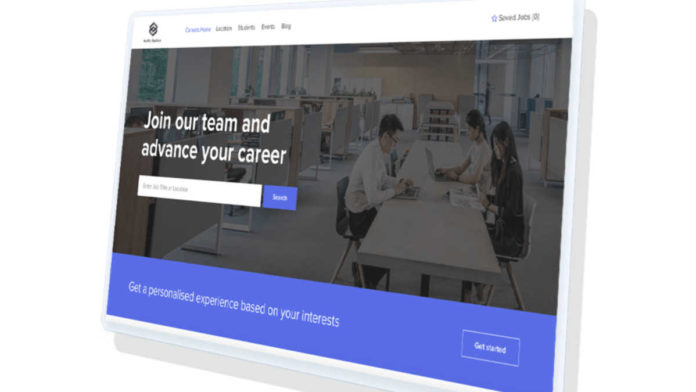
Sponsored
John Deal, Phenom’s director of product management, discusses user experience in the age of COVID-19, how the company works experience into its development process, and why employers must take a holistic view of the candidate’s journey.
Phenom has put a lot of energy into the whole idea of experience. How has that worked out in terms of market reaction and enthusiasm for the product?
I think it’s been very positive. At least before the pandemic, a lot of people understood that they needed to differentiate their career site, or their employee experience, from some of the other systems that were out there, meaning make it less rote, bring more to the table that was going to be personalized to the people who were navigating their sites or their internal landscape. So, I think it’s resonated, especially because we’re such an experience culture.
What's the role of candidate experience post-COVID-19? Phenom's John Deal lays it out. #HR #HRTech @Phenom_People Share on XPeople are used to personalization across the board, whether it’s logging into Amazon, whether it’s turning on Netflix. It’s something that people have become used to on the consumer side. And so, it’s something that we’ve brought to bear in the business-to-consumer world, and I think it’s bearing fruit
When you’re designing and building a product, how does experience fit into the equation? How do you identify experience issues, prioritize them and sort them into a product?
We typically start right up-front, in the user design phase, where we look at similar products, we look at products from other industries, we look at a lot of different sources of inspiration. And we build that into that user experience right up front, in terms of design, how things are going to look, how people are going to navigate through the site. That’s the first part of it.
And then, as we move into development, we ask what are the things that we can bring to bear from our toolbox of artificial intelligence or machine learning that will help personalize the experience from a data perspective? From being dynamic, from things changing based on the type of user, how often they’ve been on the site, where they are in their journey as a candidate or an employee or a recruiter.
We build a list of those things that we can incorporate with a compelling user experience, and pull them all together. Then we push them into the development queue to say, here’s the look and feel. Here’s the brains behind it. Let’s bring them together. Ultimately, that’s what comes out of the sausage grinder.
When you’re designing a product, you’re designing it to do something in a really efficient way. So how do you balance experience with technical power? Is there a trade off or are they co-equal branches?
I think that you have to take the challenge on the technology side to meet the experience needs. In some cases, that may require brute force. In some cases it may require intelligent ways to go about things. The reality is that technology is constantly evolving, so experience will evolve with it.
We do try to take an experience-first approach and let the technology support the experience. Occasionally, we may need to back off of a few things and just say, “Okay, well, we can’t deliver this today because there’s technology limitations or because it’s going to be clunky in the way that we would implement it.” So, we may back off on a few things and come back to them when there’s a more compelling way to deliver it. But we do try to challenge the teams technically to meet the user’s experience needs and look at different and innovative ways to bring technology to bear to get to that experience.
For the last couple of years, it seems like experience has been driving a lot of the conversation about technology and recruiting. I’m wondering if with the pandemic, has that changed? Is experience still as important?

The pandemic has definitely had an impact. I wouldn’t say that the need for a compelling experience has changed, but I think what it means to a candidate and what that means to a recruiter has definitely changed.
From a recruiting standpoint, you have some people who are sitting on their hands because they have nothing to do. And then you have other people who can’t keep up because of the demand in their industry of the jobs they need to fill.
We had one customer who needed to hire 100,000 people in two weeks. When that hits your desk, the requirements from a recruiter perspective, and the experience that we want to deliver, are drastically different than they were in the past. Before, you were having trouble, because unemployment was so low, finding the talent that you needed. So, we definitely needed to shift our thinking
But because the types of workers in demand right now are being pulled in a bunch of different directions, there’s still a need to deliver an experience to those people so that you can get them into the right funnel quickly and help companies close their critical needs faster.
For those people who aren’t hiring, we’ve shifted the focus more toward the employee experience and the additional value that companies can deliver to employees who might be furloughed or might be in a position where they’re not working as much as they were before. So, maybe there’s other parts of the organization that they can assist in. How do organizations tap internal talent that may be idle right now and move it around in order to keep the business going without spending too much money, because hiring is not going on or because expense budgets have been frozen?
We’ve done a lot of quick turns on things, but we’ve got to be very careful with how we roll things out, how organizations roll them out to their employees or how they make them forward-facing [to candidates] so that their brand remains intact.
Employers: Roll out new talent programs with care as you return to work. @Phenom_People #HR #HRTech Share on XCan you give me an example of that? When you say you’re being careful about rolling things out and approaching things a different way?
Sure. One of the things that we rolled out recently is what we call a gig platform. It’s really for internal talent, that use case of finding the folks that are idle within an organization and moving them to other places. During the rollout of that, and how we interface with the employees, we had to be very careful because the companies we’re working with are concerned about situations where someone applies for a gig and maybe doesn’t hear anything back. Or, they get rejected without a compelling reason so they’re wondering what’s going on. They’re company is already laying people off, they can’t get a gig and they’re wondering what’s going on. They’re frustrated. They’re angry. They’re anxious.
Those are the types of things we’ve had to start thinking about. How do we improve the seamlessness of communication between the company and its employees, and between the product and the employees, as well? It’s not simply just the product being better, it’s also how we help our customers manage that change within their organization so they can make sure that they’re setting the right expectations and not setting themselves up for failure as they roll this stuff out.
Looking forward, what are you hearing from employers about what they’re going to need and are going to want?
I think the biggest thing is transparency and the skills organizations have internally, and using them to really fine tune where they source for critical roles. That’s the thing that keeps coming up. A lot of companies don’t really have a holistic view of their employees’ skill sets. They might have a limited view from an employee profile that somebody filled out in some HCM, but they don’t really know across the board what they have in place. Ultimately, that will inform them on what they’re going to need in the future.
The other thing is how to make a compelling decision about where you should be sourcing a critical role. Should it be internal? Should it be external? Should it be on the West Coast? Should it be on the East Coast? How should I post it? Should I post it with this title? Should I post it with that title? Those are the types of things that we’ve been hearing for several months.
Even coming out of this crisis, when things start to settle back down, I don’t think that need will go away. It may transform into a different type of recruiting or development, but the need will still be there to have complete visibility of your current toolbox and then understand, if you need new tools, what you should do.
We’ve been talking about experience and all the things that Phenom has done and is doing. Where do you fit in the landscape among your competitors? What do you think makes Phenom stand out?
I would say that there’s two things. One is that we try to take a more holistic view of the journey from candidate to CEO. That’s how I’d put it. Because we’re looking at talent experience—not just a career site, and not just an internal mobility site—we’re trying to create this journey and marry it to the needs of a person throughout that journey. That way organizations can bring people in and bring them along and ultimately make the right decisions around them. So, that’s one thing: We take a more holistic view than a lot of our competitors do.
Second, we’ve been doing this for a while. We have some pretty slick technology on the AI side and on the machine learning side. So when it comes to making recommendations for people, when it comes to matching people to jobs, and when it comes to personalization and how we deliver dynamic content, dynamic job information, dynamic learning information, all of those things to the users, I think we do a great job of using technology to really fine tune that journey and make it personal.
I think you’ll find different pieces of that within the competitive landscape, where some people do some of those things well and some people do other things well. But between that holistic view and making it technology-driven, which we’re constantly innovating on, those make us stand out.
The only other point I’d make is that, in the short term, things are different. So whether it’s Phenom technology or somebody else’s technology, people should keep in mind that there are tools out there that they can use to offer things up to people who they’re letting go, to stay in touch with people, to create really compelling networks of alumni and make sure that people are taken care of.
There are things you can do to keep engaged with these people. We’re going to come out of this thing on the back end, so you want to stay engaged with them. There are very simple things you can do to help them out. You may have partners that can help you, but if you don’t Phenom can help you. Just keep that in mind.
Sign up for our newsletter here.
Image: Phenom
Phenom People is a global HR technology company with a mission to help a billion people find the right job. It does this through an AI-based SaaS platform called Talent Experience Management.













